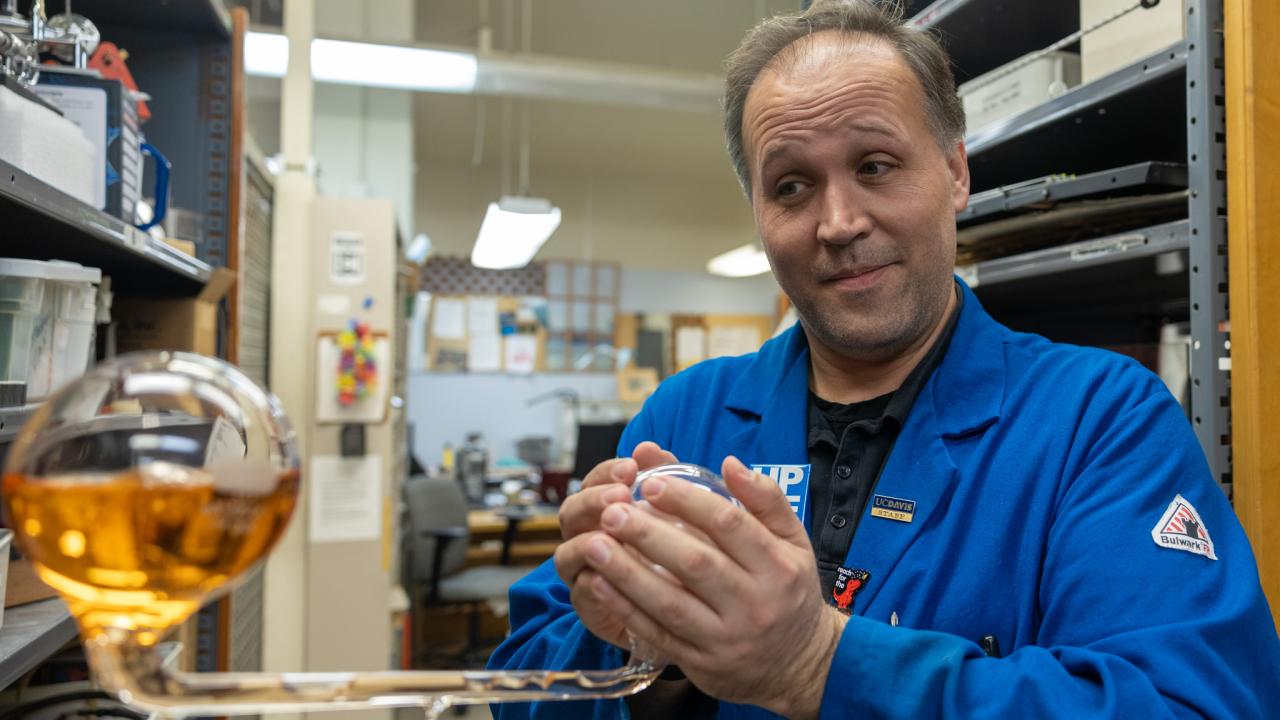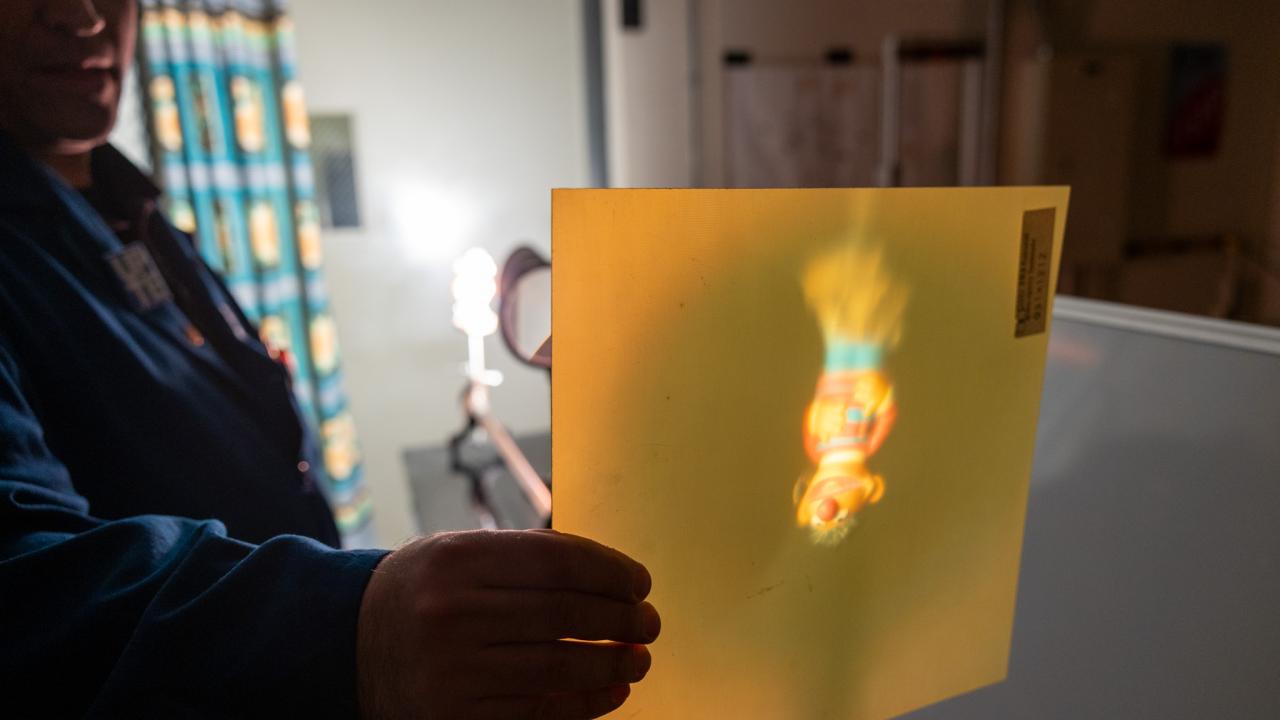
Lecture Demonstration Support Technician Matthew Smith Discusses His Role at UC Davis
Behind the blackboards of Roessler Hall is a storage space filled with gadgets, tools and other physics demonstration materials. Matthew Smith stood among the rows of shelves in the room. In his hands, he held one end of a hand boiler flask; its opposite end, connected via a thin glass tube, was filled with an amber liquid. As Smith held the flask, his body heated the apparatus causing a shift in temperature and pressure. The amber liquid began bubbling.
“I always equate physics demonstrations to visiting the Grand Canyon,” said Smith. “You can see a picture of the Grand Canyon but going there just cements the experience in way that a flat image can’t.”
For close to 20 years, Smith has worked as the Department of Physics and Astronomy’s lecture demonstration support technician. Each quarter, he assists faculty and lecturers with between 10 and 20 classes, helping with audio-visual equipment problems and solving information technology questions.
But tour his workshop located in the heart of Roessler Hall and it’s clear Smith’s passion lies in creating physics demonstrations.
“I came into high school at a time when there were still a lot of shop classes,” Smith said. “I was always good at math, physics and other sciences in high school, but I really liked shop classes: electronic shop, wood shop, metal shop. I took them all.”
He liked tinkering and building — skills that he needed when he joined the staff at the College of Letters and Science at UC Davis.
“There are not many jobs where you can kind of do them with a lot of diversity,” said Smith, who noted that, in his role, there are always more physics concepts to explore and make experiential.
“Once I complete something, I usually have to shift gears entirely,” he said. “At one point, I may be trying to figure out how to make a lightning arc travel safely through the air, and the next time, I’m trying to build a better ballistics projectile demo.”
Illuminating physics concepts
For many, physics can be an intimidating subject. Sure, we adhere to its laws in our everyday lives, but the math underlying such phenomena can be complex. Smith views his role as an opportunity to illustrate those hard-to-gasp concepts in an understandable manner.
“Sometimes demos can make the math click,” Smith said. “We have thousands of students going through these classes and everyone learns differently. That should be reflected in our lectures and demonstrations.”
Through the looking glass
As Smith walked around his workshop, he pointed out different items on the shelves. Van de Graff generators, a Tesla coil, lava lamps and other curiosities. He paused at a table, where a small figurine of Ernie from Sesame Street was positioned at one of the table’s ends.
“This demonstration is meant to show the difference between a real and a virtual image,” Smith said. “With things like optics, we tend to do demonstrations that are a little more intriguing.”
The figurine was held up in the air, a lamp positioned before it. In the middle of the table stood a lens.
“Glass reflects an image and on a bright day, you can use it to superimpose a virtual or reflected image over a real item,” he said.
Smith turned on the lamp and shut off the room’s lights. He held a translucent board at the table’s opposite end. Sure enough, an inverted image of Ernie appeared on the board.
“That’s exactly how a camera works,” Smith said.
Every year, Smith tweaks his demonstrations, so they translate best to the current cohort of students. As the times change, so too do the ways we learn.
“The goal is always to draw their attention, to get them excited about physics,” he said. “They’re getting all these proofs and hard math and concepts thrown at them. It can be a lot for some of them, so doing something exciting that can kind of grab them or at least make them want to figure out how something happened is kind of key.”

YOU MAY ALSO LIKE THESE STORIES

Illuminating Pathways
Held every spring quarter, the Department of Physics and Astronomy's Alumni Seminar Program features Aggie alums from the department discussing ways they’ve applied their degree post-graduation.

From Viruses and Materials to Galaxies and Beyond
At the College of Letters and Science at UC Davis, researchers across academic disciplines are using the power of machine learning to help protect us from the next pandemic, discover and build new materials, and explore the myriad galaxies in the heavens above.
